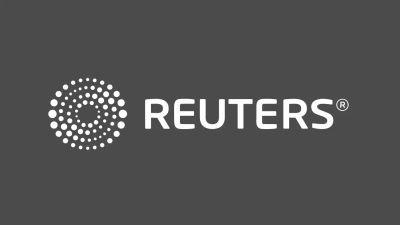March 5 (Reuters) - The labels "dove" and "hawk" have long been used by central bank watchers to describe the monetary policy leanings of policymakers, with a dove more focused on risks to the labor market and a hawk more focused on the threat of inflation.
The topsy-turvy economic environment of the coronavirus pandemic sidelined those differences, turning U.S. Federal Reserve officials at first universally dovish as they sought to provide massive accommodation for a cratering economy, and then, when inflation surged, into hawks who uniformly backed aggressive interest rate hikes.
Now, with inflation easing and the labor market still strong but cooling, the risks are seen as more balanced and the choices more nuanced.
All 12 regional Fed presidents discuss and debate monetary policy at Federal Open Market Committee (FOMC) meetings that are held eight times a year, but only five cast votes at any given meeting, including the New York Fed president and four others who vote for one year at a time on a rotating schedule.
The following chart offers a look at how officials view the outlook for Fed policy and how best to balance their goals of stable prices and full employment. The designations are based on comments and published remarks; for more on the thinking that shaped these hawk-dove designations, click on the photos in this graphic. We include rate-path expectations for those policymakers who have specified them.
Reuters over time has shifted policymaker designations based on fresh comments and developing circumstances - for an accounting of how our counts have changed, please scroll to the bottom of this story.
Patrick Harker, Philadelphia Fed President, 2026 voter: When it comes to a rate cut, "I think we're close, give us a couple of meetings." Feb 22, 2024
Jerome Powell, Fed Chair, permanent voter: "The prudent thing to do is...to just give it some time and see that the data confirm that inflation is moving down to 2% in a sustainable way." Feb 4, 2023
Loretta Mester, Cleveland Fed President, 2024 voter*: Three rate cuts in 2024 "feels about right," she said on Feb 29, 2024. "I think both the economy is in a good spot and monetary policy is in a good spot. And that gives us this opportunity really to look at the balance of risk between our dual mandate goals."
Michelle Bowman, Governor, permanent voter: "I will remain cautious in my approach to considering future changes in the stance of policy." Feb 27, 2024
John Williams, New York Fed President, permanent voter: "I do expect us to cut interest rates later this year...there's no urgency to do that." Feb 29, 2024
Thomas Barkin, Richmond Fed President, 2024 voter: "I'm still hopeful inflation is going to come down and if inflation normalizes then it makes the case for why you want to normalize rates, but to me it starts with inflation." March 1, 2024
Philip Jefferson, Vice Chair: "If the economy evolves broadly as expected, it will likely be appropriate to begin dialing back our policy restraint later this year." Feb 22, 2024
Jeffrey Schmid, Kansas City Fed President, 2025 voter: "With inflation running above target, labor markets tight and demand showing considerable momentum, my own view is that there is no need to preemptively adjust the stance of policy." Feb 26, 2024
Michael Barr, Vice Chair of Supervision, permanent voter: "It's very early to say whether we end up with a soft landing or not." Feb 14, 2024
Neel Kashkari, Minneapolis Fed President, 2026 voter: "I would say two to three cuts would seem to be appropriate for me right now." Feb 7, 2024
Christopher Waller, Governor, permanent voter: "There is no rush to begin cutting interest rates to normalize monetary policy.” Feb 22, 2024
Lorie Logan, Dallas Fed President, 2026 voter: I'm really not seeing any urgency to make any additional adjustments at this time.” Feb 9, 2024
Lisa Cook, Governor, permanent voter: "I would like to have greater confidence that inflation is converging to 2% before beginning to cut the policy rate." Feb 22, 2024
Adriana Kugler, Governor, permanent voter: "I am cautiously optimistic that we will see continued progress on disinflation without significant deterioration of the labor market." March 1, 2024
Mary Daly, San Francisco Fed President, 2024 voter: On Fed policymakers' median expectation for three rate cuts this year, "I think that's a reasonable baseline." Feb 16, 2024
Raphael Bostic, Atlanta Fed President, 2024 voter: Expects two rate cuts this year. "This threat of what I’ll call pent-up exuberance is a new upside risk that I think bears scrutiny in coming months." March 4, 2024
Austan Goolsbee, Chicago Fed President, 2025 voter: Forecast for 2024 rate cuts is “closer” to the median Fed expectation for three rate cuts, he said on Jan. 11. “The question is, how long to remain this restrictive." Feb 29, 2024
Susan Collins, Boston Fed President, 2025 voter: Baseline expectation for 2024 rate cuts is “similar” to the median Fed policymaker expectation for three rate cuts, she said on Feb. 8. “I believe it will likely become appropriate to begin easing policy later this year.” Feb 28, 2024
Note: Fed policymakers began raising interest rates in March 2022 to bring down high inflation. Their most recent policy rate hike, to a range of 5.25%-5.50%, occurred last July. Projections released on Dec. 13 showed no policymakers believe rates should go any higher this year, and a majority see them dropping by at least 75 basis points. Alberto Musalem, who starts as the St. Louis Fed's president on April 2, has not made any substantive policy remarks and is not included in the dove-hawk matrix.
*Mester hits the Fed banks' mandatory retirement age in June; if a successor is not yet hired, Chicago Fed President Goolsbee would vote until one is.
Below is a Reuters count of policymakers in each category, heading into recent Fed meetings.
Reporting by Ann Saphir; Editing by Andrea Ricci
